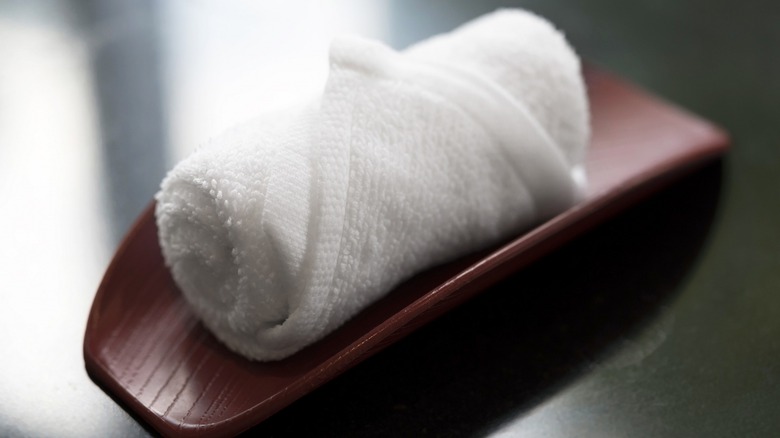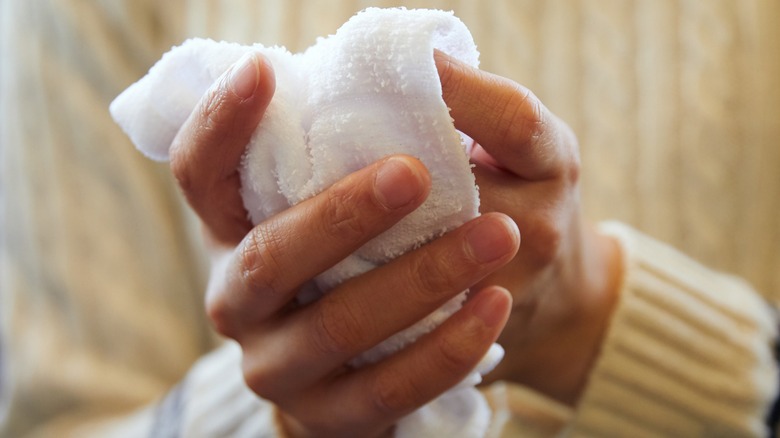The Right Way To Use The Wet Towel When Dining At A Japanese Restaurant
It might be hot, humid, and sweltering outside the doors of the Japanese restaurant you've just entered, but that rolled-up wet mini towel isn't meant for your forehead or any other part of your body — besides your hands. Presented either as cool or warm depending on the season, these moist towels can either be made out of a reusable piece of fabric or a material that is meant to be placed into the trash after use. Referred to as both oshibori and otefuki, this welcoming offering is intended for guests to clean their hands with before tucking into their delicious Japanese dishes.
As tempting as it might be to use this little towel on your face or neck, that action is not a preferred use. Instead, wipe your hands and place the towel back onto the table with the used area folded on the inside. When the oshibori is presented on a tray, it is customary to set the towel back onto the tray; however, if the towel was offered as is, perhaps extended by a server holding tongs, you can simply set the used towel onto the table off to the side of your seating area.
A sign of refined hospitality
Oshibori aren't simply moist towels. The fabrics have actually been sanitized for use in restaurant settings. The term oshibori itself is derived from the Japanese word shiboru, which means "to wring," and the use of these towels likely dates back to the 1300s when guesthouses would present travelers with wet cloths to clean off with before they entered the rooms of the inn.
Similarly, Japanese tea houses would present towels to visitors in the 1600s as a sign of hospitality, and in time, the gesture was adopted by hotels, airlines, and restaurants around the world. Spas, gyms, golf clubs, and even car dealers have also been known to offer these refreshing towelettes to customers.
So, if you feel the need to towel off your forehead after sitting down at the restaurant, excuse yourself to the washroom before placing orders for the first rounds of sake and sushi dishes. There, you can confidently wipe your face and neck before returning to the table without having committed a major Japanese restaurant mistake and caused offense to any patrons or members of the restaurant's team.

